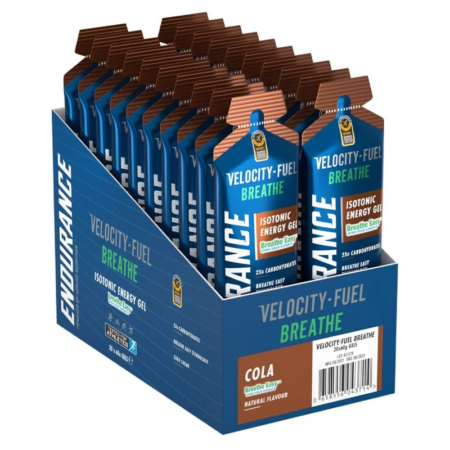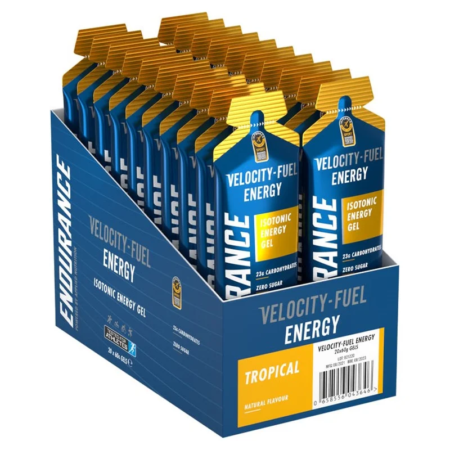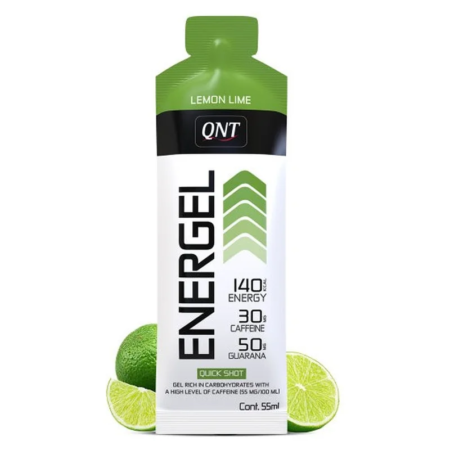Energy Gel
Are you looking for a quick energy boost during your workouts or races? Energy gels might be the solution you need. These portable packets are specifically designed to provide rapid and digestible energy to athletes during endurance sports. Their compact design makes them easy to carry and use while on the move, ensuring you have the energy you need without any hassle.
Energy gels are packed with carbohydrates, which are essential for carb loading before a big race. They are a favorite among runners, cyclists, and triathletes due to their convenience and rapid absorption rates, which help maintain energy levels without the bulk of traditional snacks.
What is Energy Gel?
Energy gel is a concentrated source of energy, made from various sugars that provide a high energy yield in a small package. These gels are designed to be easily digestible and quick to deliver energy to your body. How do they fit into an active lifestyle? They are a go-to resource for athletes who need to maintain high energy levels without the downtime of a meal.
Typically consumed during physical activity, these gels help stave off the effects of fatigue and improve performance. The caffeinated options are particularly popular, offering not just carbohydrates but also a caffeine boost to enhance focus and reduce the perception of effort during long sessions.
Energy Gel: How They Work?
Understanding the science behind energy gels can help you use them more effectively. These gels primarily provide glucose, which your body rapidly absorbs into the bloodstream, thereby increasing energy levels almost immediately. What makes them so efficient during races or training? The answer lies in their quick processing and utilization by the body, which is crucial during high-intensity activities.
They are more than just quick calories; they also offer electrolyte replenishment that is vital during physical exertion to prevent dehydration and maintain muscle function. With just the right balance of electrolytes and carbohydrates, energy gels help athletes maintain peak performance.
Benefits of Energy Gels
Energy gels offer several advantages for athletes. Here’s why many prefer them:
- Immediate energy supply that sustains performance without heaviness or bloating.
- Easy to consume and digest, even during intense physical activities.
- Helps maintain blood glucose and energy levels for longer periods.
- Portable and easy to carry on long runs or rides.
- Available in various flavors to suit different preferences and needs.
- Some variants contain caffeine for an extra mental boost.
- Supports hydration by replenishing vital electrolytes lost through sweat.
- Can be planned as part of nutrition strategies for races and training.
- Flexible usage across different types of sports and intensity levels.
When to Take Energy Gels for Performance?
Timing is critical when it comes to taking energy gels. For optimal performance, how should they be integrated into your regimen? It’s generally recommended to take an energy gel every 45-60 minutes during endurance activities, adjusting based on intensity and individual energy needs.
The strategy of using energy gels can vary among athletes, but a common approach is to start consumption early in the activity to prevent energy dips. This ensures a steady supply of carbohydrates and helps athletes avoid the dreaded “wall” that many hit towards the end of long events.
The Carbs Fuel Energy Gel
The carbohydrates in energy gels are essential for fueling athletes during intense physical activities. These gels are formulated with a strategic blend of glucose and fructose, optimizing the energy absorption by muscles. This combination allows for a higher rate of carbohydrate oxidation, which is critical in enhancing endurance and performance. Here’s how it works:
- Glucose – Rapidly boosts energy levels, providing immediate fuel for muscles and brain.
- Fructose – Metabolized more slowly, offering a sustained energy release that helps maintain performance without the spikes and crashes associated with other sugars.
By leveraging this dual-source carb solution, energy gels help athletes maintain a consistent energy output and effectively delay the onset of fatigue. This supports prolonged physical exertion and can be a game-changer in competitive sports settings. Whether you’re running a marathon, cycling through hills, or competing in a triathlon, integrating energy gels into your regimen can significantly impact your ability to perform at peak levels.
Types of Energy Gels
Energy gels are tailored to cater to varied athletic requirements, with each type crafted to offer specific benefits based on the athlete’s needs and preferences. These gels range from isotonic, which do not require additional water, to hypotonic versions that are easier on the digestive system. Choosing the right gel involves considering your body’s tolerance and your hydration plan during the activity.
Isotonic gels are an excellent choice for athletes seeking a quick energy boost without the need for extra water. These gels are designed to be in balance with your body’s natural fluids, making them easy to digest and absorb without disrupting your hydration status. They provide a steady supply of carbohydrates along with essential electrolytes to help maintain fluid balance during prolonged activities.
On the other hand, hypotonic gels are formulated to be less concentrated than your body fluids which results in faster absorption. They are particularly suited for athletes who require rapid energy delivery and wish to minimize any potential stomach discomfort. Hypotonic gels are ideal for situations where high-intensity efforts are short-lived but require an immediate energy source.
Are there any downsides to using energy gels?
Energy gels are highly effective but not without their challenges. Consuming these gels without proper hydration can lead to stomach upset, a common complaint among athletes. This can often be mitigated by pairing gels with adequate water intake.
Additionally, over-reliance on gels as the sole source of nutrition during prolonged activities can lead to imbalances. It’s important to complement them with real foods and balanced meals where possible, ensuring a well-rounded diet and preventing any nutritional gaps.















